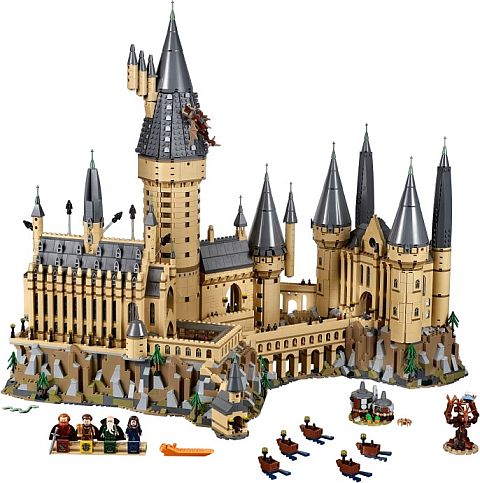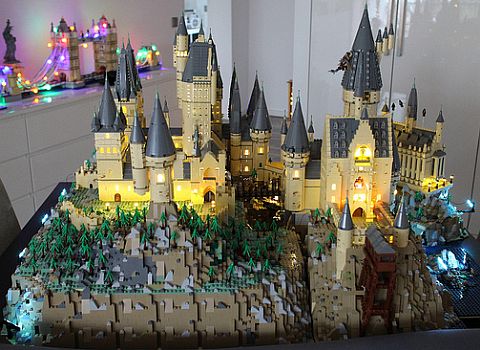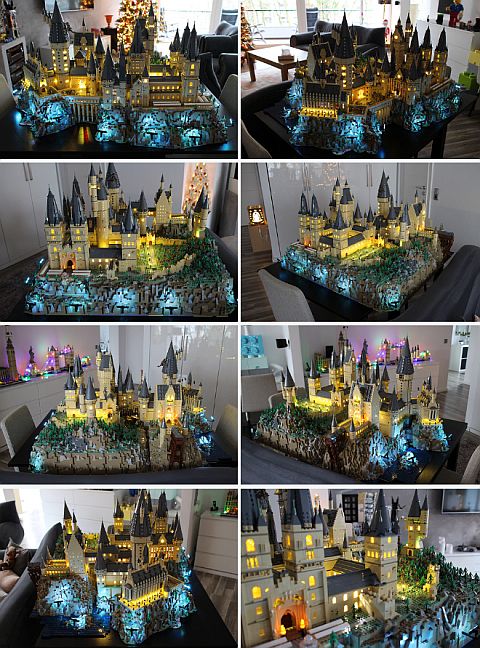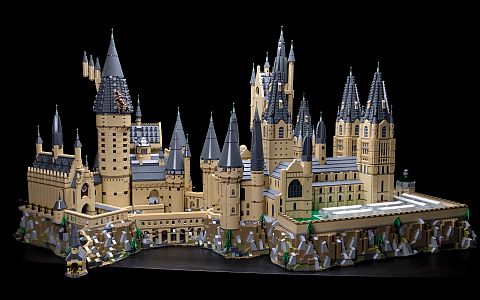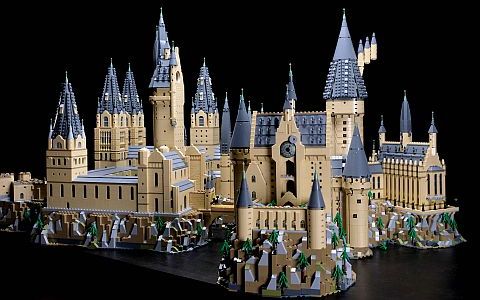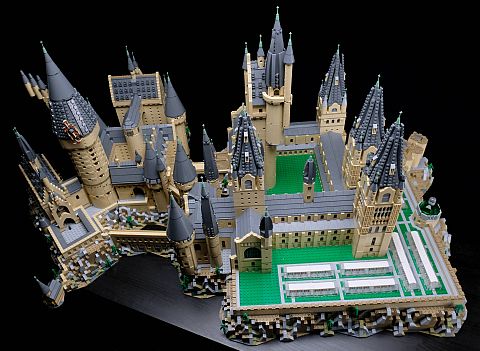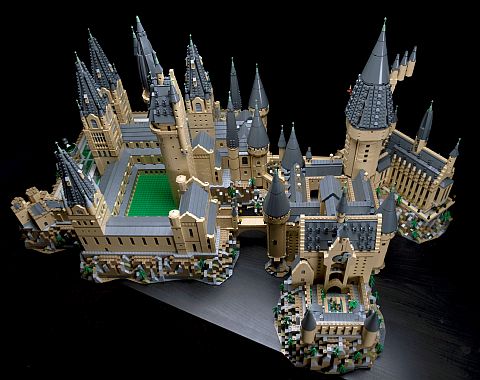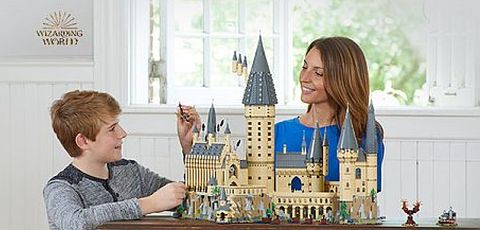Earlier today, LEGO announced the upcoming #10265 LEGO Creator Ford Mustang, the latest in the large LEGO Creator Expert Builder vehicles. LEGO designers really outdid themselves with this set, and even made the vehicle customizable! There is a lot to see here, so check out the description, pictures, and other details below. Enjoy! 🙂
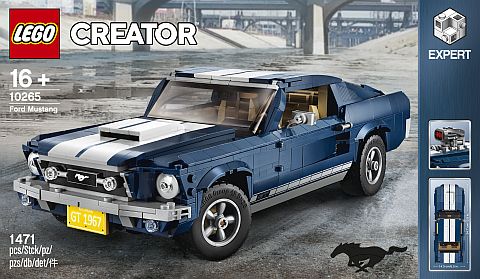
Developed in partnership with Ford, the new LEGO Creator Expert Ford Mustang model is based on a 1967 Fastback. Made up of 1,470 pieces, the nostalgic muscle car comes complete with working steering, dark-blue bodywork, white racing stripes, bonnet scoop, printed Mustang grille badge, GT emblems, and 5-spoke rims with road-gripping tires.
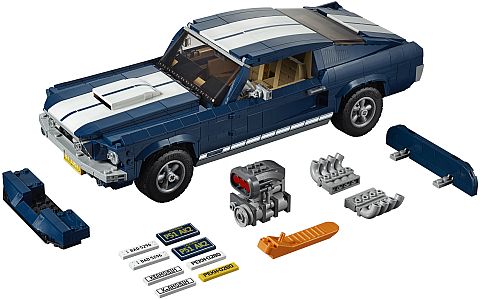
It measures over 3” (10cm) high, 13” (34cm) long and 5” (14cm) wide and will give budding builders the chance to customize their all-American icon to their own specification thanks to a collection of optional add-ons – whilst still retaining its instantly recognizable symbol of the Mustang pony logo. Customization options include a supercharger, rear ducktail spoiler, beefy exhaust pipes, front chin spoiler and a nitrous oxide tank for an authentic muscle car build experience.
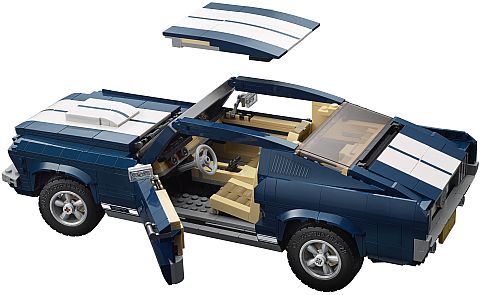
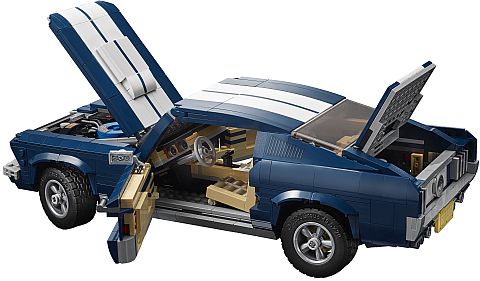
Jamie Berard, Design Lead on LEGO Creator Expert, said: “The Ford Mustang is one of the most iconic, symbolic cars in history – and to bring this fan favorite muscle car to life in brick form, with this level of customization, has been exhilarating. We can’t wait to see our LEGO and Ford Mustang fans’ own creations when they get their hands on this new set. ”
Jim Owens, Mustang Marketing Manager, said: “There are few cars on the road that are as instantly recognizable as the Ford Mustang, and it’s exciting to see the iconic car’s combination of design and heritage come through in this LEGO set.”
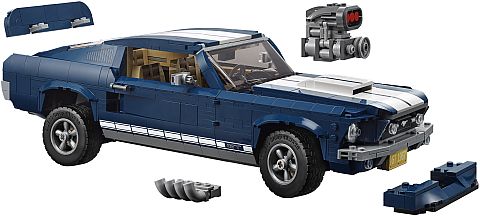
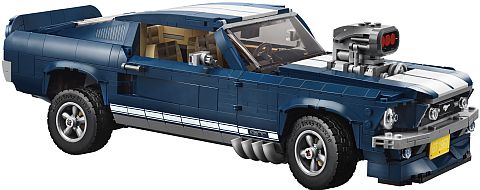
The authentic replica model also allows owners to store items in the trunk or lift the hood to reveal a detailed big block 390 V8 engine with battery, hoses and air filter detailing. The rear axle of the car can be lifted too for an extra-mean look, the doors can be opened and the roof panel removed to give access to the detailed interior with classic seats, radio, working steering and a mid-console gearshift. A printed mustang grille badge, GT emblems and a selection of license plates add the final touches to this extraordinary LEGO Creator Expert model!


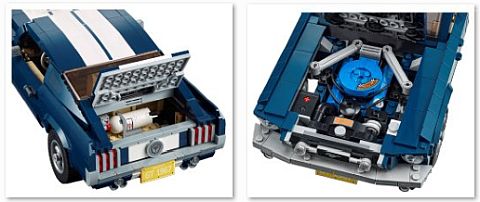
Here is the official description of the set: Build and customize your very own 1960s Ford Mustang! Discover the magic of an iconic 1960s American muscle car with the LEGO Creator Ford Mustang, featuring dark-blue bodywork with white racing stripes, bonnet scoop, printed mustang grille badge, GT emblems and 5-spoke rims with road-gripping tires. Developed with input from Ford, this authentic replica comes with optional add-ons for customization, including a selection of license plates, supercharger, rear ducktail spoiler, beefy exhaust pipes, front chin spoiler and a nitrous oxide tank. You can even adjust the lift of the rear axle for an extra-mean look! Remove the roof panel or open the doors and you have access to the detailed interior with handsome seats, radio, working steering and a mid-console gearshift. Store items in the trunk or lift the hood to reveal a detailed big block 390 V8 engine with battery, hoses and air filter detailing. This advanced building set has been designed to provide a challenging and rewarding building experience full of nostalgia and makes a great centerpiece for the home or office. Recommended for ages 16+. 1,471 pieces. See pricing further below.
- Authentic replica of a 1960s Ford Mustang featuring dark-blue bodywork with white racing stripes, air scoop, 5-spoke rims with road-gripping tires, and a selection customization add-ons.
- Open the doors or remove the roof panel to access the detailed interior with handsome seats, radio, mid-console gearshift and working steering.
- Open the trunk to store items and lift the hood to reveal a detailed Ford Mustang V8 engine with battery, hoses and air filter.
- Also includes a printed mustang grille badge and 2 GT emblems.
- Customize the Ford Mustang with the included supercharger, rear ducktail spoiler, beefy exhaust pipes, front chin spoiler and a nitrous oxide tank.
- Choose from a selection of license plates.
- Lift the hood to check out the realistic engine detailing.
- Adjust the lift of the rear axle for a real mean look!
- This Mustang toy car model includes 1,470 pieces and is suitable for ages 16+.
- New-for-March-2019 special elements include 5-spoke rims, 2×8 brick with bow, 1×3 mustang logo tile, 2×4 bow with ‘GT’ Emblem.
- Measures over 3” (10cm) high, 13” (34cm) long and 5” (14cm) wide.

The #10265 LEGO Creator Ford Mustang is going to be available on March 1st. Prices are as follows: US $149.99 – CA $199.99 – DE €129.99 – UK £119.99 – FR €139.99 – DK 1,199DKK – AU $199.99 (Euro pricing varies by country). For further details, please visit the LEGO Creator Expert section of the Online LEGO Shop.

What do you think? How do you like the LEGO Creator Ford Mustang? Is this a set you are planning to add to your collection? What other LEGO Creator Expert Builder vehicles do you have already? Which one is your favorite? Feel free to share and discuss in the comment section below! 😉
And you might also like to check out the following related posts:


